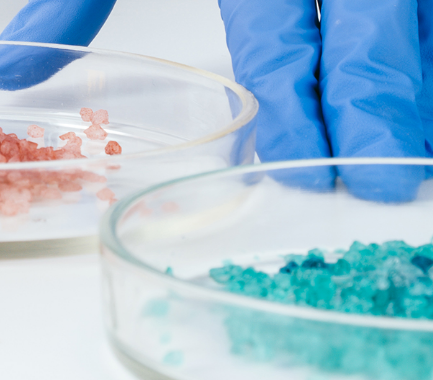Your contact
PENPET-Team - Hamburg

Christoph Meister
Sales
Tel. +49 (0) 40 - 675 7 99 30
sales@penpet.de
Get in touch with us.
Diisodecyl Phthalate (DIDP)
Diisodecyl Phthalate (DIDP) is a mixture of different organic compounds that belong to the esters of phthalic acid and, due to their properties, are mainly used as plasticizers for polyvinyl chloride (PVC). The production is based on the processing of mixtures of isomeric hydrocarbons. Structurally different decanals are hydrogenated in an intermediate step to form the corresponding alcohols and are then combined with phthalic anhydride at high temperatures to form double esters in order to obtain the substance mixture diisodecyl phthalate.
Diisodecyl Phthalate is primarily used as a plasticizer for plastics and plastic coatings. The mixture of substances is used, among other things, in the manufacture of hoses, cable sheathing, coatings, textiles, floor coverings and other plastic parts made of polyvinyl chloride (PVC). It is also used to modify products made from poly(methyl methacrylate) (acrylic glass), cellulose esters and other polymeric plastics, and to manufacture rust inhibitors, textile dyes and sealants.
At PENPET, you can get both stabilized and unstabilized Diisodecyl Phthalate (DIDP) of the highest quality - from a reliable partner who will also meet your requirements in the long term. We look forward to receiving your inquiry for an individual offer. The timely delivery of the liquid can be carried out in packaging of different volumes.
CAS no. 26761-40-0
EINECS no. 247-977-1
Molecular formula: C28H46O4
Synonyms: DIDP, diisodecyl phthalate
Areas of application: Plasticizer for polyvinyl chloride (PVC), acrylic glass, cellulose esters, and other plastics, intermediate for the manufacture of rust inhibitors, coatings, textile dyes, sealants, hoses, and cable jackets
More Information
Diisodecyl phthalate (DIDP) is a mixture of different phthalates with the same molecular formula but different structural organization. The basic structure of all included connections is the same: The double esters consist of a residue of phthalic acid whose carboxyl groups are both replaced by ester groups, each of which is linked to a decanol residue. However, the isomeric substances differ in the structure of these decyl groups, which can be branched to different extents and consequently have different configurations of carbon and hydrogen atoms.
Due to the unsaturated phenol structure in the center of the phthalate residue, diisodecyl phthalate has aromatic properties and can, among other things, undergo hydrogenation reactions. The ester groups can be dissolved and the compounds split into their components by hydrolysis in a basic or acidic environment.
Under normal conditions, diisodecyl phthalate (DIDP) is a colorless liquid with a high viscosity. The oily compound is almost odorless and hardly volatile. The mixture of substances has a very high boiling point and only changes to the gaseous state at temperatures of over 370 °C. Due to this high temperature resistance, it is particularly suitable for use in vehicle and mechanical engineering. The melting point of the mixture is -50 °C.
Diisodecyl phthalate is sparingly soluble in water and will float to the top on contact due to its higher density. In contrast, the substance is readily soluble in most organic solvents.
When stored and handled as directed, diisodecyl phthalate (DIDP) is chemically stable. For this purpose, it must be sealed airtight and kept cool. The mixture of substances reacts violently with strong oxidizing agents, generating a great deal of heat. Diisodecyl phthalate attacks some plastics. It should therefore be stored in aluminum, stainless steel or stainless steel containers.
Diisodecyl phthalate is flammable. Its vapors pose an increased risk as they can combine with the ambient air to form explosive vapor-air mixtures. Handling open containers of the mixture of substances should therefore be avoided. Due to their higher density, the vapors also collect on the ground. If the air-vapor mixture spreads unnoticed in the work rooms, remote ignition can occur. Diisodecyl phthalate should therefore be kept away from sources of ignition such as hot surfaces, sparks, flames and electrostatic discharges. The thermal decomposition and combustion of the mixture produces irritating, caustic and noxious gases. In particular, significant amounts of carbon monoxide and carbon dioxide can be released.
According to the GHS classification, diisodecyl phthalate (DIDP) is not considered a hazardous substance. In the event of contact with the liquid or its vapors, no irritation of the skin or eyes is to be expected. Nevertheless, affected parts of the body should be rinsed thoroughly with water and examined by a doctor. Inhaling the aerosols or vapors of the mixture of substances can cause irritation of the respiratory tract, coughing and bronchitis. If diisodecyl phthalate is swallowed, gastrointestinal symptoms such as diarrhea, nausea, abdominal pain and vomiting may occur.
If absorbed in large amounts into the metabolism, the compounds can temporarily affect the central nervous system and cause kidney dysfunction. After an accidental oral intake of diisodecyl phthalate, sufficient water should be drunk, activated charcoal taken and medical supervision initiated. Gastric lavage may be required under certain circumstances.
Due to possible damage to aquatic organisms, diisodecyl phthalate is considered to be slightly hazardous to water and must not be released into the environment. If large quantities escape into the ground, the sewage system, or bodies of water, the responsible authorities must be informed. The substance mixture is not subject to any special transport regulations.
